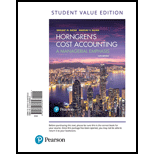
Professional ethics and end-of-year actions. Linda Butler is the new division controller of the snack-foods division of Daniel Foods. Daniel Foods has reported a minimum 15% growth in annual earnings for each of the past 5 years. The snack-foods division has reported annual earnings growth of more than 20% each year in this same period. During the current year, the economy went into a recession. The corporate controller estimates a 10% annual earnings growth rate for Daniel Foods this year. One month before the December 31 fiscal year-end of the current year, Butler estimates the snack-foods division will report an annual earnings growth of only 8%. Rex Ray, the snack-foods division president, is not happy, but he notes that the “end-of-year actions” still need to be taken.
Butler makes some inquiries and is able to compile the following list of end-of-year actions that were more or less accepted by the previous division controller:
- a. Deferring December’s routine monthly maintenance on packaging equipment by an independent contractor until January of next year.
- b. Extending the close of the current fiscal year beyond December 31 so that some sales of next year are included in the current year.
- c. Altering dates of shipping documents of next January’s sales to record them as sales in December of the current year.
- d. Giving salespeople a double bonus to exceed December sales targets.
- e. Deferring the current period’s advertising by reducing the number of television spots run in December and running more than planned in January of next year.
- f. Deferring the current period’s reported advertising costs by having Daniel Foods’ outside advertising agency delay billing December advertisements until January of next year or by having the agency alter invoices to conceal the December date.
- g. Persuading carriers to accept merchandise for shipment in December of the current year even though they normally would not have done so.
- 1. Why might the snack-foods division president want to take these end-of-year actions?
Required
- 2. Butler is deeply troubled and reads the “Standards of Ethical Behavior for Practitioners of
Management Accounting andFinancial Management ” in Figure 1-7 (page 17). Classify each of the end-of-year actions (a–g) as acceptable or unacceptable according to that document. - 3. What should Butler do if Ray suggests that these end-of-year actions are taken in every division of Daniel Foods and that she will greatly harm the snack-foods division if she does not cooperate and paint the rosiest picture possible of the division’s results?
Want to see the full answer?
Check out a sample textbook solution
Chapter 1 Solutions
Horngren's Cost Accounting, Student Value Edition (16th Edition)
- hello teacher please help mearrow_forwardWhat must have been the change in total assets and in which direction did this change occur on these financial accounting question?arrow_forwardThe income statement for September indicates a net income of $65,000. The corporation also paid $15,000 in dividends during the same period. If there was no beginning balance in stockholders' equity, what is the ending balance in stockholders' equity? Accurate answerarrow_forward
- What is the average cost per snowmobilearrow_forwardThe income statement for September indicates a net income of $65,000. The corporation also paid $15,000 in dividends during the same period. If there was no beginning balance in stockholders' equity, what is the ending balance in stockholders' equity?arrow_forwardfinal answer isarrow_forward
- nonearrow_forwardA company can sell all the units it can produce of either Product X or Product Y but not both. Product X has a unit contribution margin of $18 and takes four machine hours to make, while Product Y has a unit contribution margin of $25 and takes five machine hours to make. If there are 6,000 machine hours available to manufacture a product, income will be: A. $6,000 more if Product X is made B. $6,000 less if Product Y is made C. $6,000 less if Product X is made D. the same if either product is made.arrow_forwardAccurate answerarrow_forward
 Excel Applications for Accounting PrinciplesAccountingISBN:9781111581565Author:Gaylord N. SmithPublisher:Cengage Learning
Excel Applications for Accounting PrinciplesAccountingISBN:9781111581565Author:Gaylord N. SmithPublisher:Cengage Learning Cornerstones of Cost Management (Cornerstones Ser...AccountingISBN:9781305970663Author:Don R. Hansen, Maryanne M. MowenPublisher:Cengage Learning
Cornerstones of Cost Management (Cornerstones Ser...AccountingISBN:9781305970663Author:Don R. Hansen, Maryanne M. MowenPublisher:Cengage Learning Managerial AccountingAccountingISBN:9781337912020Author:Carl Warren, Ph.d. Cma William B. TaylerPublisher:South-Western College Pub
Managerial AccountingAccountingISBN:9781337912020Author:Carl Warren, Ph.d. Cma William B. TaylerPublisher:South-Western College Pub Financial And Managerial AccountingAccountingISBN:9781337902663Author:WARREN, Carl S.Publisher:Cengage Learning,
Financial And Managerial AccountingAccountingISBN:9781337902663Author:WARREN, Carl S.Publisher:Cengage Learning,



